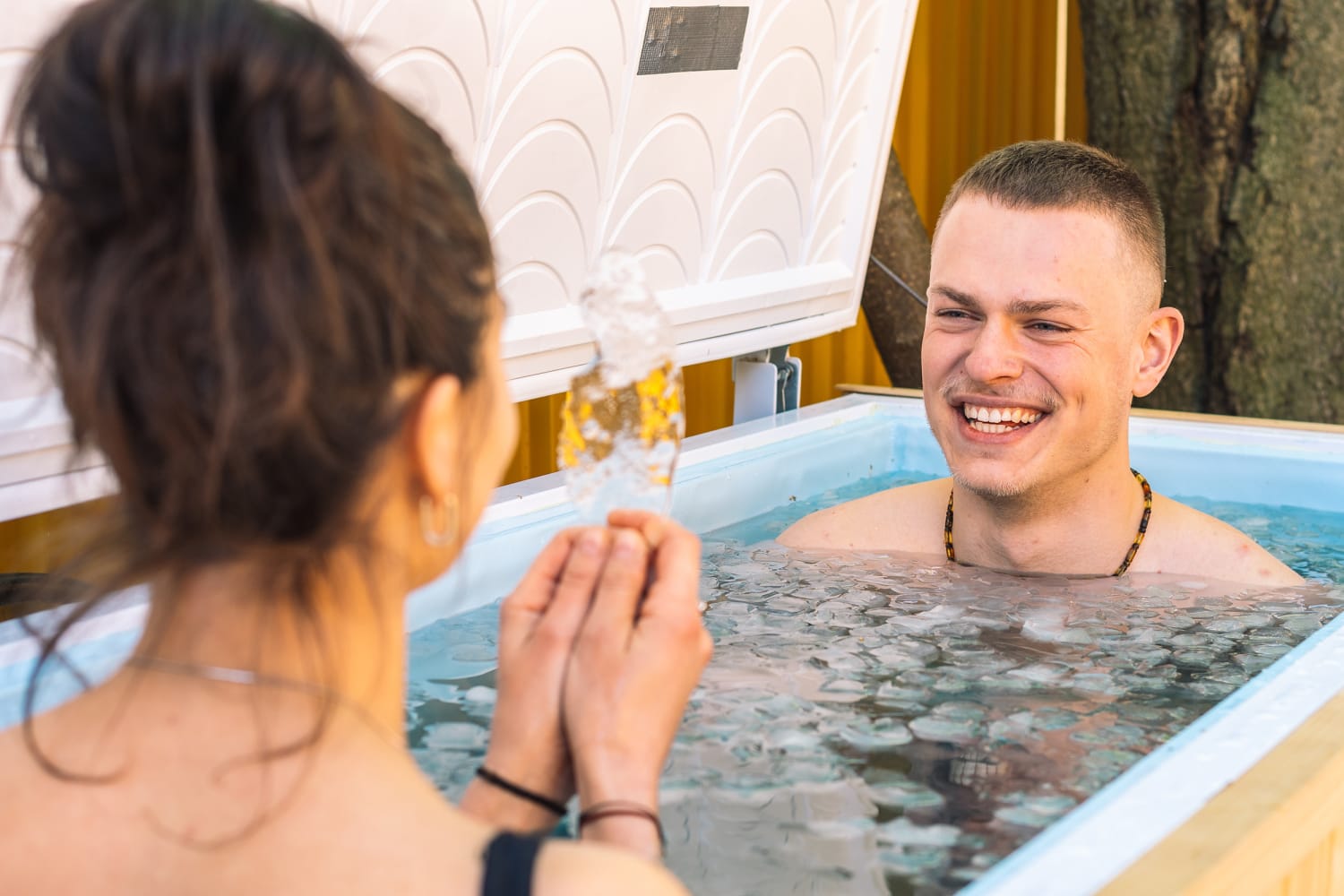Cold plunging isn’t just about building physical resilience—it has powerful mental health benefits too. Research and personal accounts show that cold water immersion can significantly boost mood, reduce anxiety, and alleviate symptoms of depression. This natural practice activates your body’s nervous system, releasing feel-good hormones and creating a lasting sense of calm and well-being.
In this article, we’ll dive into the science of how cold plunging supports mental health, explore tips for incorporating it into your routine, and answer common questions about using cold immersion for emotional well-being.

How Cold Plunging Improves Mood and Mental Health
1. Triggers the Release of Mood-Enhancing Neurotransmitters
Cold exposure prompts the release of endorphins, dopamine, and serotonin, neurotransmitters associated with happiness and pleasure. As your body adapts to the stress of cold water, these chemicals are released to combat stress and provide an emotional lift.
The “dopamine spike” following cold plunges is especially impactful—research suggests that dopamine levels can increase by as much as 250% after cold exposure. This effect can leave you feeling euphoric, motivated, and focused for hours after your plunge.
2. Reduces Cortisol Levels and Eases Anxiety
Cold plunging helps regulate your cortisol levels, the hormone responsible for stress. Chronically elevated cortisol is linked to anxiety disorders, irritability, and burnout. Cold exposure activates the parasympathetic nervous system, which shifts the body out of the “fight or flight” state and into rest and relaxation.
By lowering cortisol and calming the nervous system, cold plunging creates a mental state that’s more resilient to everyday stressors.
Explore the connection between cold immersion and anxiety management at Mental Health America.
3. Improves Emotional Regulation through Nervous System Training
Cold immersion trains the autonomic nervous system to respond more efficiently to stress. With regular practice, you’ll notice that your ability to handle anxiety-provoking situations improves, leaving you calmer and more composed in your daily life. This regulation makes it easier to manage:
- Mood swings and emotional highs and lows
- Reactions to unexpected stressors
- Feelings of overwhelm in social situations
4. Promotes Mindfulness and Present-Moment Awareness
The shock of cold water immediately pulls your attention into the present moment, making it an effective tool for practicing mindfulness. During a cold plunge, your mind shifts away from worries and distractions, focusing only on the sensations in the body.
This present-moment awareness can interrupt negative thought patterns and help individuals struggling with anxiety or depression feel more grounded and connected. Cold plunging is especially beneficial for those who find traditional meditation challenging, as it naturally cultivates mindfulness.
5. Alleviates Symptoms of Depression through Hormonal Balance
For those experiencing mild to moderate depression, cold plunging can offer natural relief by stimulating hormones that counteract depressive symptoms. Research suggests that the activation of beta-endorphins and norepinephrine during cold exposure contributes to improved emotional well-being.
Cold plunging can also help:
- Regulate sleep patterns, which are often disrupted in depression
- Increase motivation and energy levels
- Improve the body’s response to chronic stress triggers
According to Frontiers in Psychology, exposure to cold activates brain regions involved in emotional control, promoting better resilience against depressive thoughts.

How to Use Cold Plunging for Mood Enhancement
1. Start Slowly and Build a Routine
If you’re new to cold plunging, it’s essential to start slow to avoid overwhelming your system. Try:
- Short cold showers (30-60 seconds)
- Plunges lasting 1-2 minutes and gradually increase time
- Practicing cold exposure 3-4 times per week for consistency
Over time, your nervous system will adapt, and you’ll begin to notice mood-enhancing benefits throughout the day.
2. Pair Cold Plunging with Breathing Exercises
Combining cold immersion with breathwork techniques like the Wim Hof Method can enhance your emotional stability. Conscious breathing helps regulate your nervous system and increase oxygen flow, deepening the mental benefits of the plunge.
Learn more about breathwork for stress relief from The Wim Hof Method.
3. Use Cold Plunging as a Reset Tool During Stressful Days
Many people find that a quick cold plunge is the perfect way to reset their mood during a challenging day. Whether you’re dealing with work-related stress or emotional fatigue, immersion in cold water offers a fast, effective way to clear your mind and start fresh.
FAQs
Some people experience an immediate boost in mood after just one session, thanks to the release of endorphins and dopamine. However, for more lasting mental health benefits, consistency is key. Incorporate cold plunging into your routine 3-4 times per week for best results.
While cold plunging offers powerful mood-enhancing benefits, it is not a substitute for professional therapy or medication. It can be a complementary practice to support mental health alongside traditional treatments.
Cold plunging is generally safe, but individuals with cardiovascular conditions or other medical concerns should consult their doctor before starting. Begin with shorter exposure times and listen to your body to avoid discomfort.
Conclusion
Cold plunging offers a powerful, natural way to elevate mood and combat symptoms of anxiety and depression. By activating mood-enhancing neurotransmitters, lowering cortisol levels, and improving emotional regulation, this practice can have profound benefits for mental well-being. Whether used as a daily routine or a quick reset during stressful moments, cold plunging is a practical tool for enhancing mental health.
Start small, stay consistent, and enjoy the emotional lift and resilience that come with cold plunging. Over time, you’ll experience improved mood, reduced stress, and a sense of calm that stays with you throughout the day.
For more tips on mental health and wellness, visit Mental Health Foundation.






